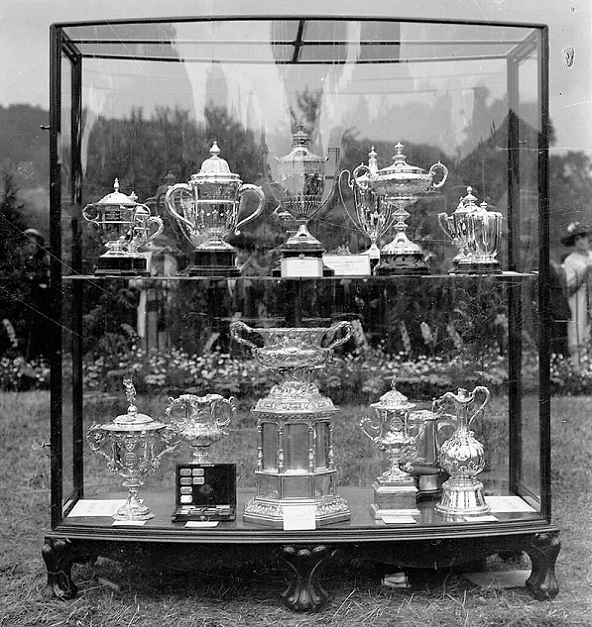If you visit any Secondary School or Club, upon entering you will more than likely be greeted by a cabinet of gleaming trophies, representing the success of the various teams that the School or Club supports. Signs of success such as these are important in establishing the value of the sporting community (or "tribe"), as it seeks to differentiate itself from others with similar goals.
Historically, the pride in the display was intended to demonstrate the values of the community through sport. More often than not, trophies on display will be named after a person (or persons), whose contribution to the sporting community has resulted in their values and success being idealised in the trophy being competed for.

Trophies with history and meaning generally invoke higher degrees of competitiveness and mutual respect for the rules of the game (and the skills exhibited by players within these rules). The trophy is therefore not an "object", but a "representation of ideals", awarded to those who best mirror them when in a competitive sporting environment and who carry these values into their daily lives, outside of sport.
There is always a risk that these ideals can become tarnished or misrepresented, when a trophy is overtly promoted for commercial purposes. When the desire to retain the trophy becomes more closely aligned to the defence of a commercial goal (at whatever the financial cost), rather than the defence of the community's values, then the trophy may eventually become a "trinket"; less valued by ideals, more valued by price.